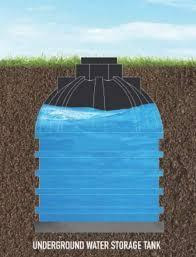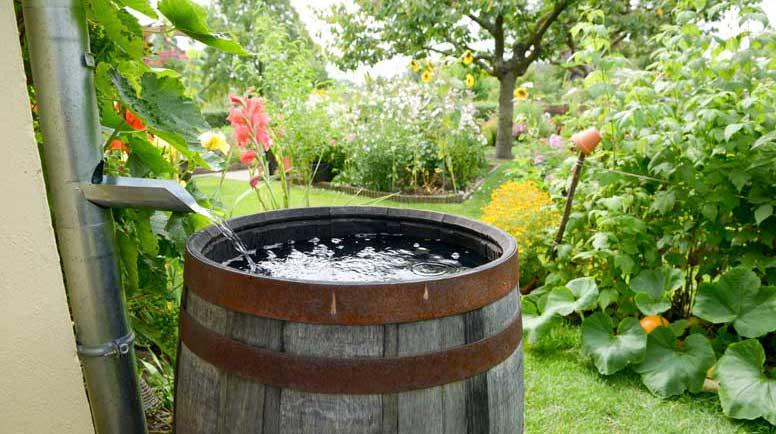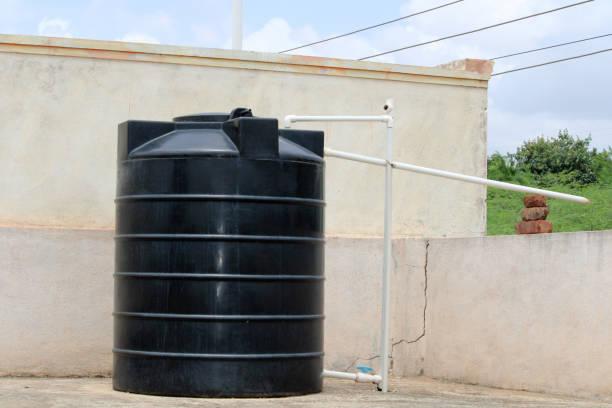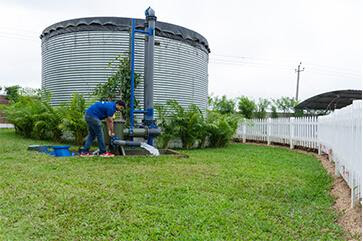Rainwater Harvesting Advantages Types And Methods
Rainwater harvesting is a valuable term for self-sufficiency, household water, combating water scarcity, and a broad business term for the future. By collecting and treating rain and stormwater from roofs and ground surfaces, water availability for human consumption increases exponentially without putting undue strain on other sources of primary water supply. Rainwater becomes an infinite resource and a life-giving gift from nature when precise scientific measurements are used. Rainwater harvesting is one of the simplest and oldest methods of self-supplying water.
Rainwater harvesting enabled us to find innovative solutions to the crisis. Rainwater is safe for consumption or domestic use, with no long-term negative consequences. Rainwater harvesting provides a cost-effective and irrefutable answer to the call for water conservation without disrupting the hydrologic cycle as modern methods of recycling waste water for human consumption become more expensive. Rainwater should be collected and stored in supply drains for future use. Rainwater is commonly used in gardening, crop irrigation, livestock care, residential heating, and water treatment.
Furthermore, one can collect as much rainwater as one wants without fear of being taxed or penalized (just make sure it isn't breeding mosquitoes). Rainwater is salt-free, chlorine-free, calcium-free, and lime-free, and its pH level is slightly below 7. Rainwater harvesting technology that is appropriate will reduce the environmental footprint while also lowering the water costs for every household.
Rainwater collection can be used for personal or commercial purposes.
1. Individual rainwater harvesting systems involve collecting rain or storm water in barrels or tarpaulins and channelling it to water storage tanks or a well with or without filtration.
2. Commercial rainwater harvesting differs from how water is collected and distributed, i.e. (rainwater collected goes to shafts, boreholes, barrels, aquifers, underground vaults, and water reservoirs.
Rainwater is collected from rivers or roofs and redirected to a deep pit (well, shaft, or borehole), a reservoir via percolation, or collected from dew or fog using nets or other tools in many places. Some of its applications include water for gardens, livestock, irrigation, domestic use with proper treatment, indoor heating for houses, and so on.
Water collection, supply, and redistribution in rainwater harvesting consist of four stages:
capturing rainfall or stormwater from a home's or other building's roof and drainpipes. The greater the size of the roof, the more water can be collected.
It is a common misconception that rainwater is clean and free of toxins. Despite the fact that rainwater is not collected for drinking water, studies show that good rainwater harvesting systems must go through a filtration process to ensure it is free of debris and certain contaminants.
All rainwater harvesting systems require storage space and containment.
Effective use of stored rainwater can be redistributed wherever it is intended to be used to the greatest extent, such as gardens, crops, RO purifiers, valleys, downspouts to underground shafts, storage tanks, and so on.
Rainwater harvesting methods are broadly classified into the following categories.
1. Rainwater harvesting systems that are directly pumped (Submersible)
Water collected into the underground tanks has to go through required filtration systems before being redistributed via a direct-pump harvesting system.
This system is typically simple to install and is primarily used in the home. Water enters the tank via gravity or a pump or both, and is then redistributed from the tank to household appliances via another pump. The directly pumped rainwater harvesting system is known as a "submersible direct pumped rainwater harvesting system." If the pump is located near the appliances and draws water from the tank, the system is also known as a "suction direct pumped rainwater harvesting system."

2. Systems of indirect pumped rainwater harvesting (Suction)
Storage areas must be located on the surface or in a less deep underground area on your property rather than fully underground. Water can be restored in multiple tanks, both underground and inside the building. The advantage of pumping water using a hydraulic or electric motor with a pressurized flow is that it provides great flexibility and ease of maintenance, as well as control over how much rainwater is collected.

3. Indirect gravity rainwater harvesting systems
Indirect gravity systems contain storage tanks placed at the elevated areas of your property. They are most commonly located above the building's roof. The rainwater collected from the roof and drains gets redirected to the tank via a pump, but it can be redistributed from the tank via gravity. Because this system only needs to pump the water once, you can save a lot of energy.

4. Rainwater harvesting systems that rely solely on gravity
These are the most cost-effective and energy-efficient rainwater harvesting systems available. Gravity-only harvesting systems rely only on gravity to collect rainwater from roofs by simply placing containments or barrels beneath the drainpipes connected to water capture from rooftops. It should also be set up so that the water tank is higher than the surface level of the appliances to which it must supply and redistribute water. Gravity-only systems are most commonly used by homeowners who want water for gardening or whose living space is limited to only the ground floor.

The Advantages of Rainwater Harvesting
1. Creates a living culture that encourages people to be conservative by identifying and controlling their individual or household water usage.
2. Rainwater harvesting helps to realize effective water management. “We should not only deal with the problem caused by floods, but it should also provide for irrigation, electricity, and navigation,” said the doyen and visionary behind National Water Grid, ‘The Water Man of India’ Dr. Ambedkar. He considered water cannot to be a curse or a rare commodity. Water has to be the wealth of the nation. With rainwater, harvesting states can be able to handle water needs on their own. Thus, it leads to the gradual transition from a dependent to a self-sufficient economy.
3. There is no scarcity of changing seasons because there is always enough water in storage and ready for
4. To maintain groundwater levels, and reduce surface water contamination with pesticides, sediment, metals, and fertilizers.
5. Reduces the velocity of flow in local creeks, streams, and rivers following heavy rainfall or storms, reducing the potential for soil erosion.
6. Reduces water clogging in streets, roads, and so on. It prevents pollution, contamination, and the spread of water-borne diseases.
7. Simplify individual property water management program requirements.
8. Reduces energy consumption and mining requirements, as well as provides control over the impact of natural disasters.
9. Act as a backup provider for heavy water needs in manufacturing processes.
10. While governments struggle to meet citizens’, water needs by building new dams, extending underground pipes, and establishing new water treatment plants, citizens, on the other hand, faces difficulties due to increased billing dates and rising prices in the economy. In terms of cheaper water storage, rainwater harvesting is a blessing for both parties.
11. Rescuer during emergency situations within a property or industrial premises (in the event of a fire) because water is readily available and convenient


